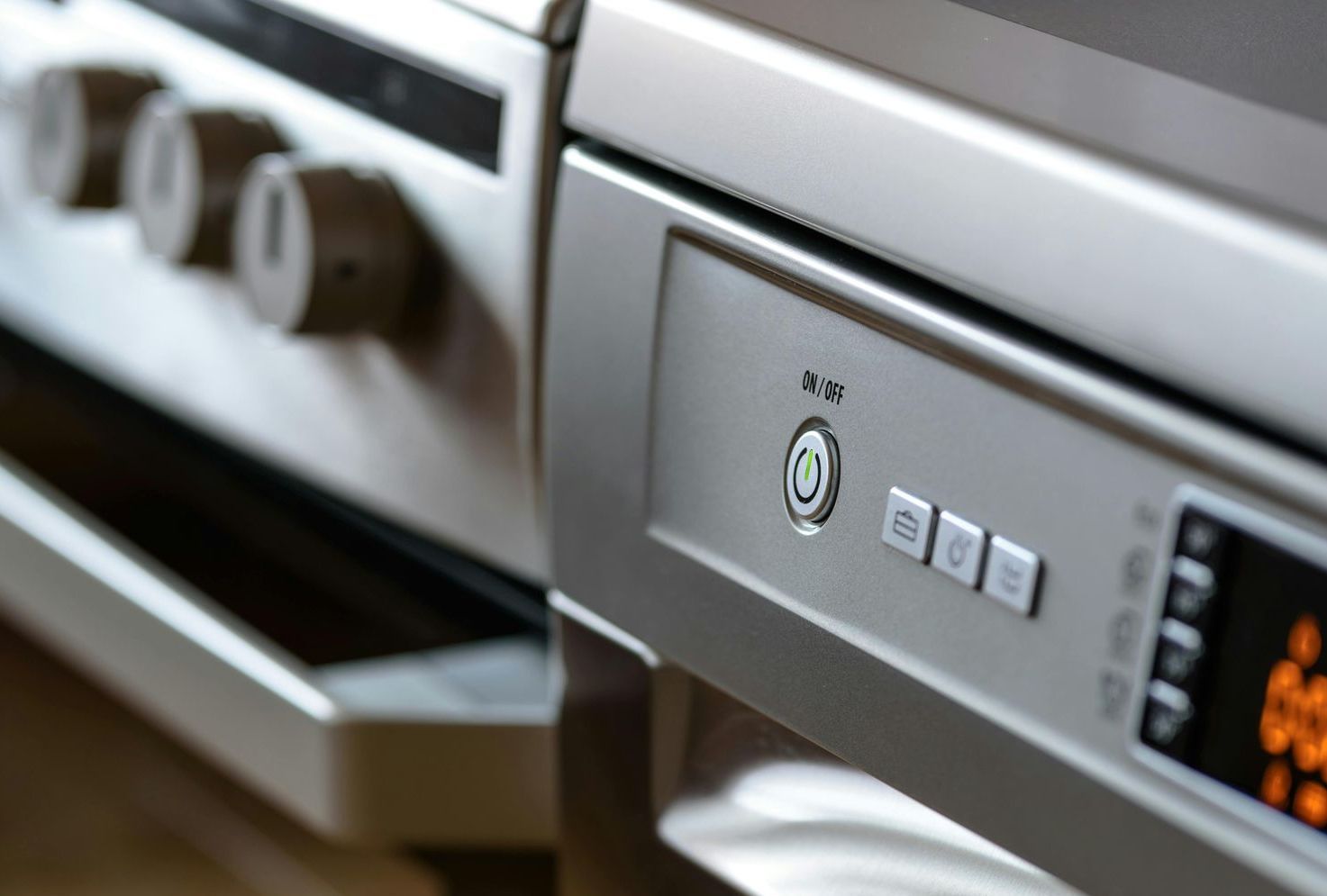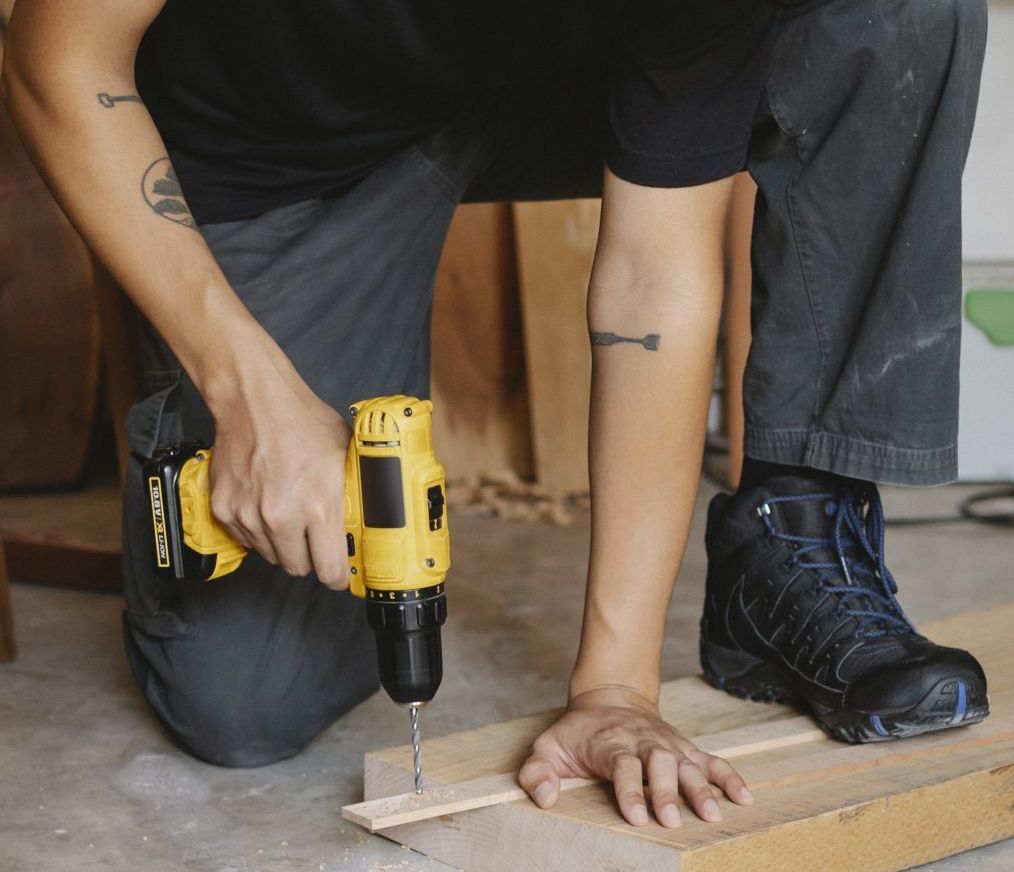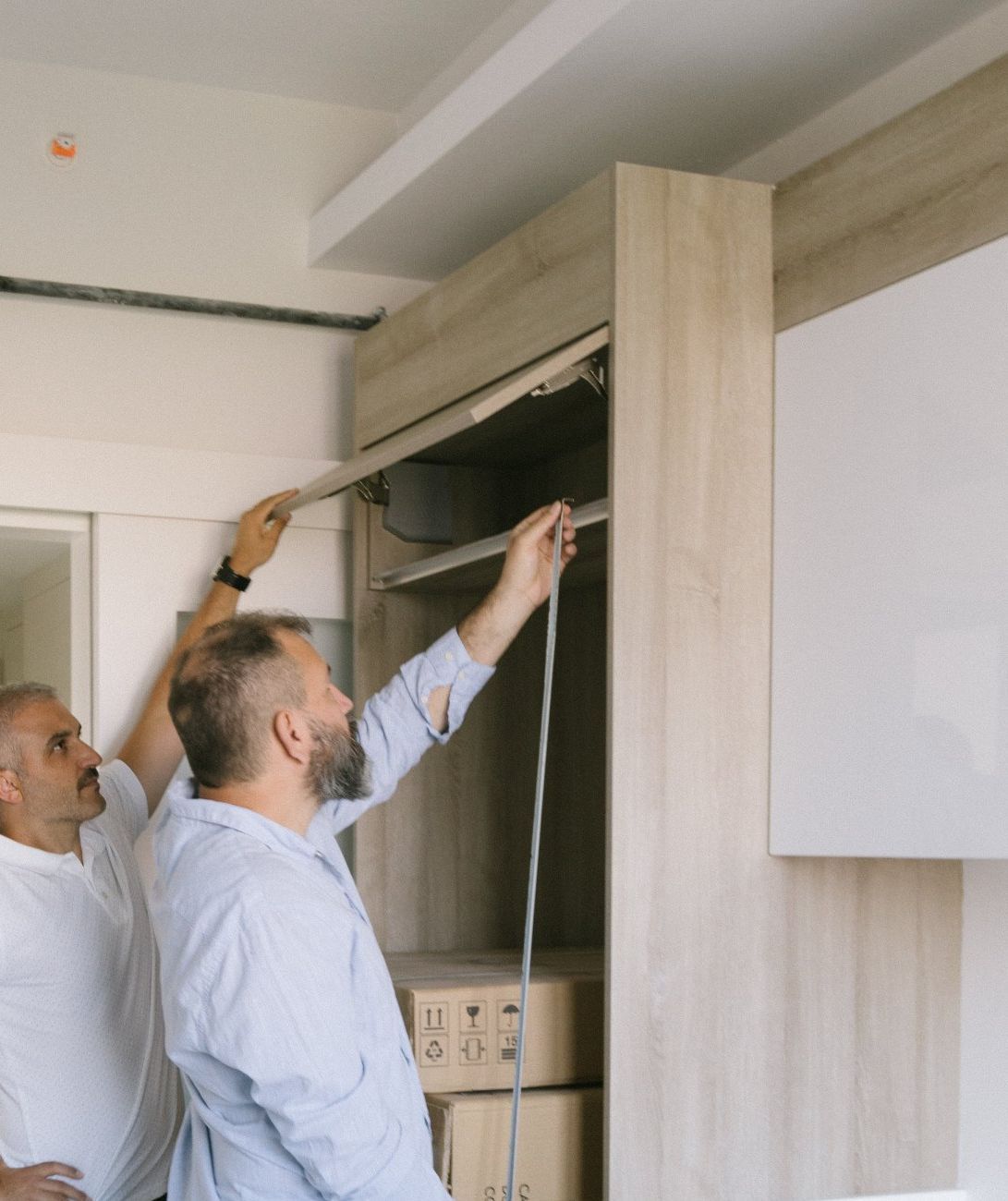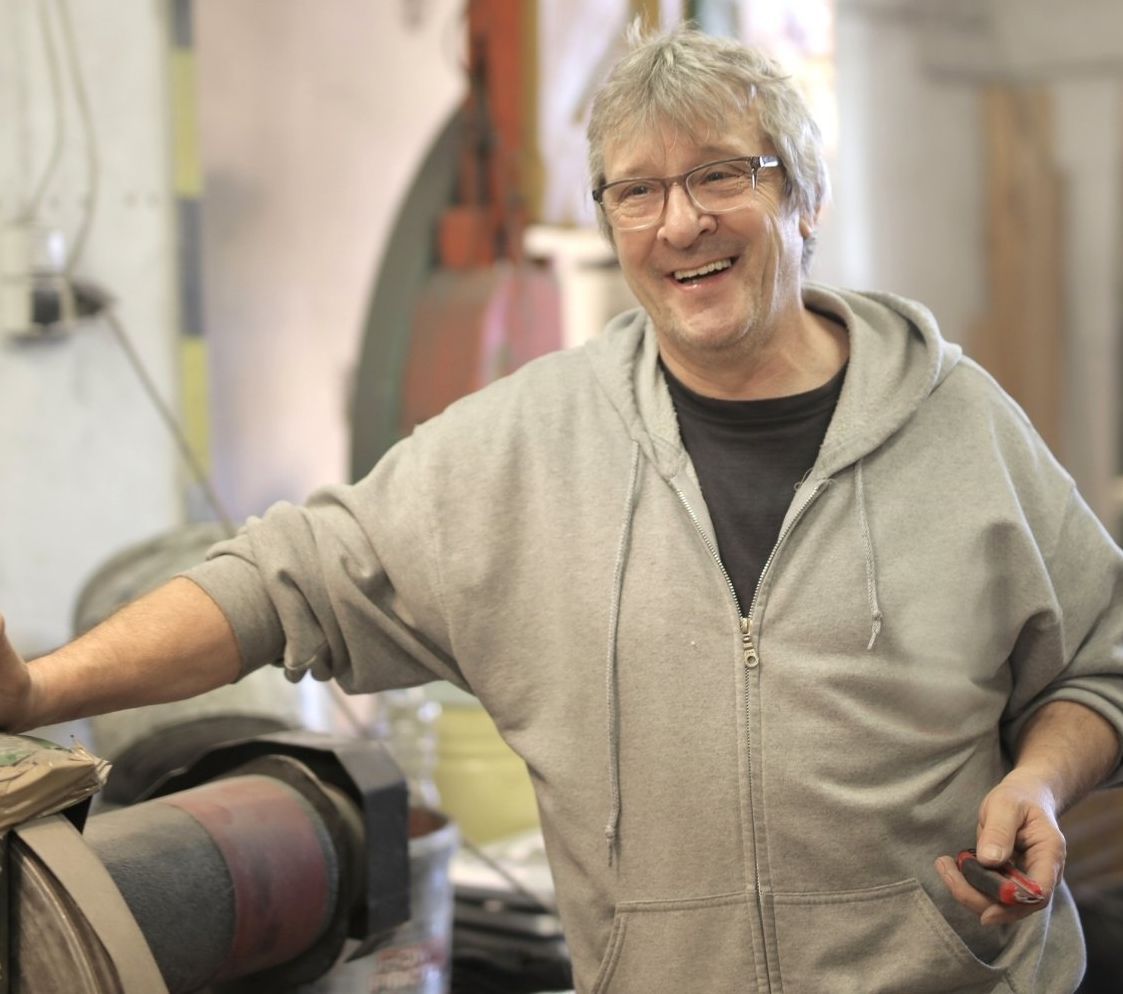Handyman's Blog; The Life of a Craftsman.

By Christian T Abella
•
November 6, 2024
When we think about saving money, our minds often dart to cutting out lattes or resisting those shiny new shoes online. But what if there were another way—one that’s less about cutting back and more about caring for what we already have? Preventative maintenance may not sound like the sexiest money-saving strategy, but it is a powerful one. It’s about addressing small issues before they snowball into overwhelming repairs, and, yes, it’s about avoiding that eye-watering repair bill that can catch us by surprise. In this article, let’s explore how adopting a proactive mindset toward maintenance can keep both our possessions—and our finances—healthy for the long run. 1. The Cost of Neglect: Why Small Problems Become Big Expenses Think of every time you’ve driven a car, heard a strange noise, and ignored it. "It’ll go away," you might have thought. Unfortunately, most noises don’t. They often indicate wear and tear, and by letting them linger, a minor fix (like brake pads) can become a costly repair (like a new brake system). Preventative maintenance is an investment in resilience. If a leaky faucet is left dripping, it doesn’t just add to your water bill; it could eventually damage your sink or cabinet. This could mean replacing plumbing, cabinets, and even flooring—a price tag far heftier than a simple washer replacement. 2. The Power of Routine Checkups: Your Home, Your Car, and Beyond Just as we go to the doctor for annual check-ups, our home, cars, and appliances benefit from regular tune-ups. Here are three key areas where a little preventative maintenance can go a long way: Your Home HVAC System: Scheduling yearly maintenance for heating and cooling systems can extend their lifespan by years, improve efficiency, and reduce monthly energy bills. Roof and Gutters: Cleaning gutters and inspecting your roof may seem like small tasks, but doing so helps avoid serious issues like water damage, which can wreak havoc on your home. Pipes and Plumbing: Checking under sinks and around toilets for leaks and corrosion can prevent costly water damage. Replacing worn seals is far less expensive than dealing with a burst pipe. Your Car Oil Changes and Fluids: Regular oil changes and fluid checks ensure your engine runs smoothly and prevent breakdowns. Consider it akin to hydration for the human body—simple, but crucial. Tire Rotation and Alignment: These small adjustments can prevent uneven wear, extend tire life, and make your car handle better, avoiding costly replacement and accident risk. Battery and Brakes: A quick brake check and battery test can save you from getting stranded on the road and prevent emergency replacements that cost a premium. Your Appliances Refrigerators and Freezers: Cleaning condenser coils and checking seals are small steps that can keep your fridge running efficiently and extend its life by years. Washing Machine and Dryer: Regularly cleaning the dryer vent and inspecting hoses for leaks can prevent costly repairs and even reduce fire risks. Hot Water Heater: Draining the water heater once a year to remove sediment can improve efficiency and prevent the need for a costly replacement. 3. The Mental Shift: From Reactive to Proactive Care Preventative maintenance is more than just a physical task; it’s a mindset. In a world where so much is disposable, maintaining and caring for what we have is an act of sustainability, mindfulness, and wisdom. When we commit to a proactive approach, we align ourselves with the principle that by taking care of the small things, we can avoid larger and more stressful consequences. Plus, there’s a psychological payoff in knowing that you’re in control. There’s a certain pride and peace in knowing that you’re not just waiting for things to break but are taking an active role in their upkeep. 4. The True Savings of Preventative Maintenance While upfront costs for maintenance can sometimes feel like an extra burden, the long-term savings are well-documented. Here’s how preventative maintenance pays for itself: Avoiding Catastrophic Breakdowns: The cost of an emergency repair can be multiple times that of routine maintenance. A small HVAC service fee, for example, can prevent a winter breakdown that might require a full system replacement. Boosting Energy Efficiency: Proper maintenance keeps things running at peak performance, which often translates to lower utility bills. A clean HVAC filter, for example, allows air to flow more freely, meaning your system doesn’t have to work as hard—and your wallet breathes a sigh of relief. Extending Lifespan of Your Belongings: Regular care adds years to the life of almost everything we own, from our cars to our electronics. Extending the lifespan of a major purchase, like an appliance, is a direct way to defer the need for a costly replacement. 5. How to Build a Preventative Maintenance Routine Preventative maintenance doesn’t have to mean a full day lost to tinkering and toiling. Here’s a simple plan to integrate it into your routine: Set Reminders: Use your phone or a calendar to remind you of regular maintenance tasks. Seasonal changes are a great trigger for home tasks, while car and appliance checkups can be spaced throughout the year. Batch Tasks: Many tasks can be grouped together. For example, while you’re checking your smoke detectors’ batteries, inspect fire extinguishers and clean your dryer vent. Ask for Help: Many tasks can be DIY, but don’t hesitate to hire a professional for annual checks, especially for areas like HVAC, plumbing, and electrical. An expert’s trained eye can spot and resolve issues you might miss. Embrace the Small Fixes and Reap Big Rewards Preventative maintenance may not seem urgent until it’s too late, but it’s one of the most empowering, effective ways to protect your finances. By adopting this proactive approach, you’re giving yourself the gift of control over the small issues that could, left unchecked, become big problems. So, the next time you hear that faucet drip, see that check engine light flash, or feel the need to put off cleaning those gutters, remember: small fixes today lead to big savings tomorrow. This practice isn’t just about saving dollars—it’s about building a future with fewer surprises, fewer financial setbacks, and more peace of mind. Because, at the end of the day, taking care of what we already have may be the most sustainable choice of all.

By Christian T Abella
•
October 15, 2024
As homeowners, we depend on our appliances daily, and keeping them in top condition is essential for efficiency, safety, and saving money in the long run. But how often should you service those big-ticket items like your air conditioner, heater, or refrigerator? Let’s break down the recommended maintenance schedules for the appliances that keep your household running smoothly. 1. Air Conditioner (AC) Your AC works tirelessly during the summer months to keep your home cool. To make sure it doesn't quit on you when you need it most, regular maintenance is key. Recommended service frequency : Annually . When : Schedule a tune-up in the spring , before the hot weather hits. What to expect : A pro will clean the condenser coils, check the refrigerant levels, inspect the thermostat, and ensure the airflow is efficient. Regular servicing can extend your AC’s lifespan and prevent breakdowns. If your AC has a filter that needs changing, be sure to swap it out every 1-3 months depending on usage. A clogged filter makes the unit work harder, which can lead to higher energy bills and a shorter lifespan for the system. 2. Heater/Furnace Whether it’s a gas furnace or an electric heater, your heating system should be serviced regularly to keep your home warm and safe through the winter months. Recommended service frequency : Annually . When : Ideally, in the fall , before you fire up the heat for the season. What to expect : During a service call, a technician will check the heat exchanger, clean out dust and debris, inspect the pilot light or ignition system, and make sure your blower motor is operating properly. For gas systems, carbon monoxide checks are a must to ensure your safety. For furnaces, remember to change the air filter at least every 3 months to improve air quality and system efficiency. 3. Refrigerator Your fridge runs 24/7, keeping food fresh and safe, so it deserves some TLC to ensure it keeps working reliably. Recommended service frequency : Every 6 months to 1 year . What to expect : Clean the condenser coils (the dirty ones behind or underneath your fridge) to prevent the compressor from overworking, which can shorten the fridge’s life and increase energy consumption. Defrost the freezer as needed, inspect door seals for a snug fit, and check the temperature settings. If your refrigerator has a built-in water filter (for ice or drinking water), it should be changed every 6 months to avoid bacteria buildup and keep your water tasting fresh. 4. Dishwasher Dishwashers might not seem like they need much attention, but regular maintenance can keep them from breaking down prematurely. Recommended service frequency : Every 6 months . What to expect : Clean out the filter to prevent clogs, descale the system if you have hard water, and wipe down the door seal to avoid mold or grime buildup. You should also inspect the spray arms to make sure water flows freely, ensuring your dishes get properly cleaned. 5. Washing Machine A malfunctioning washing machine can lead to floods, mold, or expensive repairs, so routine servicing is crucial. Recommended service frequency : Every year . What to expect : Clean the detergent dispenser and check hoses for cracks or leaks. Hoses should also be replaced every 3-5 years . If you have a front-loading washer, you’ll want to clean the rubber door gasket regularly to avoid mold and mildew buildup. Don’t forget to run a cleaning cycle using washing machine cleaner or white vinegar every month to keep the drum fresh and residue-free. 6. Dryer The dryer is another appliance that needs regular attention, not just for performance but for safety, as lint buildup is a fire hazard. Recommended service frequency : Every 6 months . What to expect : Clean the lint trap after every load (yes, every load!). But every six months, the vent pipe should be thoroughly cleaned to prevent blockages. In homes with heavy dryer use, a professional inspection may be necessary annually to ensure the vent system is clear of any lint that’s escaped the trap. 7. Water Heater Your water heater works in the background, making sure your showers are hot and dishes clean. But even this workhorse needs regular maintenance to stay efficient. Recommended service frequency : Annually . What to expect : Flushing the tank to remove sediment buildup is crucial for keeping the system running efficiently, especially if you have hard water. A technician will also check the temperature settings, test the pressure relief valve, and inspect for leaks or rust. If you have a tankless water heater, it’s still a good idea to descale the system once a year. 8. Oven and Range These kitchen essentials get a lot of use, especially around the holidays, so you want to keep them in good condition for those big meals. Recommended service frequency : Annually , but a deep clean every 3-6 months is helpful. What to expect : Clean the oven thoroughly and check for any gas leaks (if applicable). Inspect and clean burner elements, and make sure the oven temperature is accurate. A poorly maintained oven can lead to uneven cooking or wasted energy. For gas stoves, inspect the igniters and clean the burners regularly to ensure they’re working efficiently. Electric stoves may need coil replacements every few years if you notice uneven heating. 9. Garbage Disposal While you might not think of your garbage disposal as something that needs maintenance, it definitely benefits from regular cleaning and a little care. Recommended service frequency : Every 6 months . What to expect : Run ice cubes through the disposal to sharpen the blades and clean out gunk buildup. A professional can inspect the motor and ensure there are no leaks or cracks forming in the housing. Also, flushing the disposal with hot water and dish soap helps clear out any lingering odors. Regular appliance maintenance may seem like just another item on your to-do list, but it’s well worth the effort. By keeping up with these schedules, you’ll prevent costly breakdowns, extend the life of your appliances, and keep your home running smoothly. Set reminders on your calendar or use a home maintenance app to keep track of service intervals. With a little proactive care, your appliances will thank you with years of reliable service!

By Christian T Abella
•
February 26, 2024
As a seasoned entrepreneur and advocate for thriving small businesses, I've observed the critical role that pricing plays in the success of service-based ventures, especially for those in the handyman industry. Pricing your services not only affects your profitability but also your reputation and client satisfaction. In this article, I'll share insights on how to price handyman services for fair and profitable estimates, ensuring the growth and sustainability of your business. Understanding Your Costs The first step in pricing your handyman services is to have a clear understanding of your costs. This includes both direct and indirect expenses. Direct costs are those associated with a specific job, such as materials and labor. Indirect costs, on the other hand, include overhead expenses like insurance, tools, vehicle maintenance, and marketing. By comprehensively accounting for all your costs, you can ensure that your pricing covers your expenses and leaves room for profit. Researching the Market Market research is crucial in setting competitive prices. Look into what other handymen in your area are charging for similar services. This will give you a benchmark to work from and help you understand what clients are willing to pay. However, it's important to remember that while being competitive is necessary, you should not undervalue your services. Your pricing should reflect the quality and expertise you bring to the table. Value-Based Pricing One effective pricing strategy is value-based pricing. This approach involves setting prices based on the perceived value of your services to the client. For example, if you specialize in a particular type of repair or have a unique skill set, you can charge a premium for your services. Communicate the benefits and value of your services clearly to your clients, highlighting your expertise and the quality of your work. Hourly vs. Project-Based Pricing Deciding whether to charge by the hour or by the project is another important consideration. Hourly pricing can be simpler and more straightforward, especially for smaller jobs. However, it can also lead to uncertainty for the client regarding the final cost. Project-based pricing, on the other hand, provides a clear estimate upfront, which can be more appealing to clients. When opting for project-based pricing, ensure that your estimate is detailed and accounts for potential contingencies. Transparent Communication Transparency in your pricing is key to building trust with your clients. Provide detailed estimates that break down the costs and explain the scope of work. Be upfront about any potential additional charges that may arise during the project. Clear communication helps manage client expectations and reduces the likelihood of disputes over pricing. Adjusting Your Prices As your business grows and your skills develop, it's important to revisit your pricing regularly. Consider factors such as increased costs, market changes, and your level of experience. Don't be afraid to adjust your prices to reflect the value you provide. Regularly reviewing your pricing ensures that it remains fair for your clients and profitable for your business. Pricing your handyman services requires a delicate balance between fairness and profitability. By understanding your costs, researching the market, adopting a value-based pricing strategy, and communicating transparently with your clients, you can set prices that reflect the quality of your work and support the growth of your business. Remember, your pricing is a reflection of your brand and the value you provide, so take the time to get it right.

By Christian T Abella
•
October 13, 2023
Rising energy costs have birthed a new breed of homeowner: the eco-conscious, tool-toting handyman ready to wage war on wastefulness with whimsy! This delightful eco-warrior delights in the dance of energy-saving with humor, grit, and a mighty caulk gun. So, grab your hardhat and LED lightbulb; let's embark on an energy-saving escapade! Lighten the Load: LEDs Leading the Way Bask in the glow of energy efficiency with LED bulbs, the superheroes of home illumination! These feisty light sources scoff at the energy consumption of their incandescent cousins, providing brilliant light for a fraction of the cost. Besides, installing LED bulbs is so simple, even a caveman could do it - and they probably wish they had them during the ice age! Weatherstripping: Not Just a Funny Word Roll up those sleeves; it's weatherstripping time! Yes, it sounds like something whimsical and light, but this mighty tool in your energy-saving arsenal seals gaps in doors and windows tighter than your grandma's Tupperware. It's the unseen hero keeping the cold air out and your hard-earned dollars from floating away on the breeze. Programmable Thermostat: A Cool (or Warm) Sidekick A programmable thermostat is the trusty sidekick every eco-warrior handyman needs. With this nifty device, you command your heating and cooling systems to operate at peak efficiency, never wasting an ounce of energy. Plus, coming home to a house that's the perfect temperature? That's the kind of superhero landing we all deserve! Insulation: Your Home's Snuggly Sweater Insulation is like knitting a colossal, cozy sweater for your home. While your walls won't parade around boasting the latest fashion, they’ll silently thank you for the warm embrace of top-notch insulation, cutting energy costs like a hot knife through butter. And let’s be honest, who wouldn’t want to wrap their home in a giant, energy-saving hug? Solar Panels: Harness the Power of the Sun! Ever dreamed of wielding the power of the sun? With solar panels, this fantasy morphs into reality! The sun showers us with a ridiculous amount of energy daily, and solar panels are your ticket to harnessing this boundless bounty. Not only will you cut electricity bills, but you'll also make the sun work for you - talk about a power move! Water-Saving Devices: Because Every Drop Counts Water is precious; ask any parched plant or person! Introduce aerators and low-flow toilets to your home, turning it into an oasis of water conservation. These unassuming devices diligently reduce water use, lowering utility bills while giving you a reason to beam with eco-pride every time you flush. The Green Handyman Rides Again! Armed with LEDs, weatherstripping, and an unyielding determination, the green handyman (that’s you!) is poised to make a colossal impact. Each energy-saving upgrade nudges your home towards unparalleled efficiency, proving that with a dash of humor and a sprinkle of effort, anyone can transform into an eco-warrior. So, to energy waste, we say, “Begone!” For the green handyman is here, caulk gun blazing, ready to seal the deal on a more sustainable future!

By Christian T Abella
•
October 11, 2023
Growing old gracefully in the comfort of one’s home is a wish many harbor. As life's tapestry unfolds, our nests need tweaking to cradle us snugly and safely. That’s where the skilled hands of handyman services enter, quietly making homes safer and more accessible for those wishing to age in place. Aging in Place: A Heartfelt Need For many seniors, the familiar nooks and comforting crannies of home hold precious memories, making aging in place a desirable option. However, a home that once echoed with the laughter and pitter-patter of a bustling family needs thoughtful adjustments to cater to the mellowed, more delicate tempo of life's autumn years. The Silent Work of Handyman Services These are the gentle, expert hands that weave safety into homes, making them ready for senior living: Grab Bars - Holding Hands Steadily: In the sanctuary of bathrooms, grab bars are the silent support, steadying steps as seniors navigate slippery tiles. Lighting - Casting Brightness and Clarity: Shadows retreat as handyman services improve lighting in crucial corners, guiding sure and safe steps through the twilight. Ramps - Smoothing Paths: For those reliant on wheels beneath their feet, ramps are the gentle slopes easing their way, expertly installed by handyman services. Widening Doorways - Making Room: Doors open wider, accommodating the swish and glide of mobility devices, thanks to the meticulous work of handymen. Floor Modifications - A Steady Ground: The slippery dance of risky floors is tamed, making way for surfaces that offer firm, reassuring support underfoot. Lever-Style Door Handles - Easy Access: Traditional doorknobs give way to lever-style handles, bending to the tender, sometimes feeble grasp of aging hands. Storage Adjustments - Within Reach: With shelves bowing lower, every cherished or necessary item is within a comfortable arm’s reach. Choosing Your Handyman: Select Wisely In the quest for the right handyman, look for those whose work sings praises through the homes they’ve touched. Reviews and testimonials shine a light on their craft. Select a service that stands confidently behind its work, offering guarantees or warranties as a badge of honor and assurance. Homeward Bound Safely Home, a word that wraps around us with warmth and safety, becomes even more significant as we age. Handyman services work silently in the background, their skills and expertise making homes whisper support and care to those choosing to age within their familiar walls. Each grab bar, ramp, widened door, or adjusted shelf is a note in the harmonious symphony of a safe, accessible home. Choosing with care and thought, seniors and their families can invite into their homes a handyman service that not only understands the technicalities but also appreciates the subtle, tender requirements of aging in place. With the right service, a home continues to be the steadfast companion in the journey of life, providing comfort, safety, and a treasure trove of memories in every corner.

By Christian T Abella
•
October 9, 2023
When embarking on the treacherous journey of home renovations, one encounters a mythical creature that is essential to the process: the Handyman. This elusive figure, armed with a tool belt and a mysterious smile, plays a pivotal role in turning your dilapidated dwelling into a palace of splendor. The Handyman: Jack of All Trades The Handyman is a unique species, possessing a set of skills as vast as the ocean. Need a wall painted? The Handyman is your artist. Got a leaky faucet? Behold, the Handyman transforms into a plumber. With a flick of the wrist and a turn of a screwdriver, tasks are completed with a finesse that leaves homeowners in awe. This magical being is not limited by the conventional boundaries of occupations. Electrician , carpenter, painter, and sometimes even therapist, the Handyman embodies them all, providing solutions to your home woes while lending an ear to your renovation-related stress. The Handyman’s Toolbox: A Treasure Trove The Handyman’s toolbox is a Pandora’s Box of wonders. Within its confines, you’ll find gadgets and gizmos aplenty, each with a specific purpose known only to the Handyman. These tools, when wielded by the master, perform miracles that mere mortals can only dream of achieving. From hammers that don’t accidentally smash thumbs to tape measures that seemingly extend into infinity, the Handyman’s toolbox is a treasure trove of potential and power. With each tool, the Handyman weaves a tapestry of renovation magic, leaving behind a trail of fixed, painted, and installed masterpieces. Navigating the Renovation Maze Home renovation is a labyrinthine endeavor, filled with twists, turns, and the occasional minotaur. In this maze of confusion and drywall dust, the Handyman is your trusty guide, illuminating the path with a flashlight that probably has more functions than a Swiss Army knife. With an uncanny ability to decipher the enigmatic language of IKEA manuals and a sixth sense for locating elusive wall studs, the Handyman navigates through the renovation chaos with grace and humor. Each step is calculated, each move is deliberate, and each joke is impeccably timed to lift your spirits amidst the rubble. The Handyman’s Secret: Patience and Precision The secret sauce in the Handyman’s renovation recipe is a delightful blend of patience and precision. With the patience of a saint and the precision of a surgeon, the Handyman meticulously executes each task, turning the impossible into the possible. Ever watched a Handyman at work and wondered how a task that would take you hours (or days) is completed in mere minutes? It’s the Handyman’s secret, a magical concoction brewed from years of experience and a dash of natural talent. With this potion, walls are painted evenly, shelves are installed levelly, and your sanity is preserved miraculously. A Toast to the Handyman As we stand amidst our newly renovated homes, sparkling with the fresh scent of paint and the glow of accomplishment, let’s raise a glass to the unsung hero of renovation projects: the Handyman. With a tool for every task and a joke for every moment, the Handyman is the beacon of light in the murky waters of home improvement. So, here’s to the Handyman, the maestro of renovation, the wizard of home repair . May your tool belt always be heavy, and your smile ever bright, as you continue to turn houses into homes and dreams into reality. Cheers!

By Christian T Abella
•
September 13, 2023
Ladies and gentlemen, the quest to find the perfect handyman is like looking for a unicorn in a herd of very inept horses. If you've ever hired a handyman that turned your minor plumbing issue into an indoor pool, then you know exactly what I mean. So, before you send out the SOS flare and bring a stranger into your home to potentially knock down a wall instead of fixing a shelf, here are some hilarious yet very real mistakes to avoid. 1. Judging by the Tape Measure on their Belt You spot him. He's got a tape measure hanging proudly from his belt. Ah, yes, a sign of true craftsmanship. Wrong! Just because he's got the gear doesn't mean he knows how to use it. I have gym shoes in my closet, but that doesn't make me an Olympic athlete. So, look past the tape measure and do some actual vetting. 2. Believing "I've been doing this since I was a kid" Great, he’s been hammering nails since he was five. My toddler tries to feed herself with a fork, but I wouldn't trust her to cater a dinner party. Experience doesn't mean expertise. Always ask for references or even pictures of past work. Trust, but verify. 3. Forgetting to Ask, “Is that in Dog Years?” When your potential handyman claims, "I've been in the business for 10 years," do clarify if that's in dog years. There’s a huge difference between 10 human years of experience and a mere year and a bit. Wouldn’t you rather have a handyman who has seen and repaired more broken toilets than just “that one time at band camp”? 4. Thinking More Tools = More Talent It's tempting to be swayed by the number of tools they bring to the job. But let's remember: the ancient Egyptians built the pyramids with fewer tools than Bob has in his truck. And if Bob can't fix your doorbell, perhaps he's overcompensated somewhere else. A truly skilled handyman can work magic with a basic set of tools. And no, a rubber chicken is not considered a standard tool, even if it does break the tension. 5. Being Wooed by a Flashy Business Card Shiny, holographic business cards with a catchy slogan like "Nailed It!" are fun. But let's not get dazzled by the bling. What’s printed on a glossy card isn’t nearly as important as what’s backed up by a solid reputation. Always, and I mean ALWAYS, check reviews and ask friends for recommendations. Yelp is there for a reason, folks! 6. Failing to Define "Handy" Sure, he claims he's handy. But what does that even mean? Some believe being able to change a light bulb without electrocuting themselves qualifies them as a professional. Define the job you need done clearly. If your handyman's eyes glaze over when you explain the project, it might be a sign to keep looking. 7. Not Considering the “After-Service” Always inquire about the post-repair scenario. Some handymen have the tendency to vanish into the abyss once the job is done, making them harder to track down than Bigfoot when something goes wrong. A good handyman will offer after-service, ensuring that if a problem arises, they’ll be there faster than you can say, "Did you even fix it?" In conclusion, hiring a handyman shouldn’t be like playing Russian roulette with your home repairs . Remember these mistakes, have a good chuckle, and then get serious about finding the right person for the job. With a bit of humor and due diligence, you'll have a handyman who truly nails it (and not just on their business card)!

By Christian T Abella
•
September 11, 2023
So you’ve got a leaky faucet , a wobbly table, and some indescribable mess of wires you think might be vital for your internet connection. The question is, who you gonna call? Not Ghostbusters (wrong movie), but do you beckon a handyman or a contractor? In the red corner, we have the Handyman: Jack of all trades, master of... well, some. This is the guy who'll hum the theme song of MacGyver while wielding a hammer in one hand and a paintbrush in the other. In the blue corner, we have the Contractor. When they show up, you half expect a film crew to be documenting their every move. They are specialists, after all, and often bring along a team that makes the Avengers look underqualified. So, how do you choose? Let’s break it down. Round 1: Complexity of the Task Handyman: Perfect for those jobs that need a little finesse, but don’t require the full entourage. Think of tasks like fixing that crooked shelf, painting a room, or perhaps assembling the multi-part furniture that you swore looked simpler in the store. Contractor: Now, if you’re planning on remodeling your entire kitchen or adding a second story to your house, Mr. Handyman might just run away screaming. This is when you call in the contractor, who can manage more complex tasks and ensure everything is up to code. Round 2: Cost Handyman: Often, hiring a handyman can be lighter on the wallet for those smaller jobs. Why? Because they don’t come with an entourage of superheroes, each demanding their own superhero salary. Contractor: Yes, they can be pricier, but remember, with great power (or specialization) comes a higher rate. They have the expertise and the equipment to tackle larger projects, and with that comes a cost. Think of it as hiring the Avengers to save your city; it's totally worth it! Round 3: Timeframe Handyman: Got an hour or two? Perfect! That leaky faucet or the door that just won’t shut properly can be fixed before you finish binge-watching your favorite show. Contractor: They’re not called in for their speed. They are the tortoises in our story, slowly and methodically getting the job done. If you're looking for a home makeover in a day, they might disappoint. But remember, Rome wasn’t built in a day (and neither is your new living room). Round 4: Certification & Insurance Handyman: While many handymen are experienced and highly skilled, they might not always be licensed or insured for all types of work. It's always a good practice to ask, especially if your light bulb change requires standing on a 20-foot ladder above your prized porcelain collection. Contractor: Typically, contractors have specific licenses and insurance. This doesn’t just give them bragging rights at parties, but ensures that they're well-equipped and prepared for bigger tasks. Round 5: Emotional Support Handyman: While this isn’t exactly part of the job description, let’s be honest: there’s nothing more soothing than having someone there to pat you on the back and tell you everything's going to be alright when you accidentally drill through a water pipe. Contractor: Expect more of a professional boundary here. They might not offer a shoulder to cry on, but they’ll make sure the job is done right! The Verdict In the great debate of Handyman vs. Contractor, it’s not about who's better, but rather, who's right for the job . Before you decide, assess your needs, budget, and timeframe. Then, make an informed choice. Just remember, whether you go with the solo-superhero or the specialized squad, always treat them to a cuppa. After all, they're the real household heroes!

